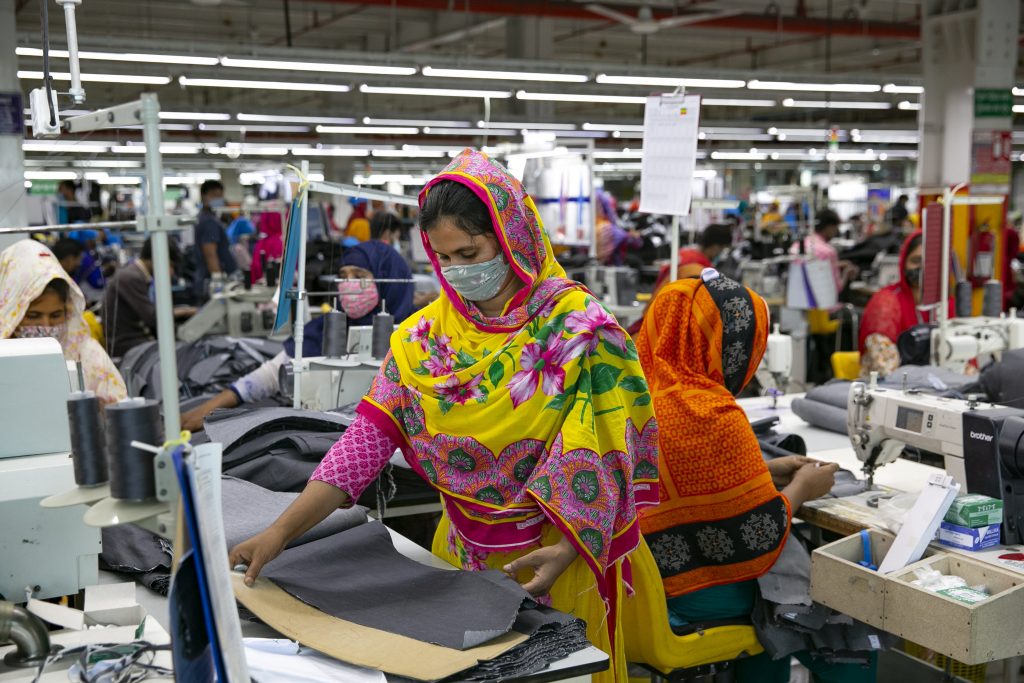
The pandemic has revealed the previously invisible nature of global supply chains. Research is now underway into how vulnerable workers in developing nations have been impacted.
The COVID-19 pandemic has inflicted devastation not just on the health of people but on economies, particularly on global supply chains for all types of products. And nowhere has this been more obvious than within the global apparel industry.
Over the past few decades, supply chains have become complex, often extending around the globe for many of the products we consume, says Professor Amrik Sohal from the Department of Management.
“Interestingly the players involved in these supply chains are often invisible to consumers,” he says.
“In many cases, retailers or manufacturers themselves do not have total visibility of what goes on in their suppliers’ factories or further up the supply chain – commonly referred to in the industry as first tier and second tier suppliers.”
But global supply chains are vulnerable to all kinds of risks and disruptions which has been devastatingly highlighted by the global pandemic.
With retail stores and factories under lockdown and a large number of workers infected by the virus needing isolation, and subsequently, the need for social distancing has meant that factories have not been able to operate at full capacity.
The apparel industry is a multi-billion-dollar industry employing millions of workers in retail stores, garments manufacturing factories and their suppliers of items such as fabrics, buttons, zippers and padding materials based around the world.
More significantly to developing country economies and communities, the apparel industry employs millions in manufacturing and supplier factories.
In Bangladesh alone, more than 4.1 million workers – largely women from rural areas – are employed in the ready-made garments industry. In 2018 they had US$34.13 billion in export earnings. But once the pandemic hit, export earnings plunged to under $28 billion in 2020.
Professor Sohal leads a research team based in the Department of Management (Monash Business School) at Monash University that has been examining the global apparel industry over the past few years and especially during the COVID-19 pandemic.
The team, including Associate Professor Glen Croy, Dr Fahreen Alamgir and Dr Tharaka De Vass have conducted surveys and interviews with garment manufacturing factories in Bangladesh and Sri Lanka, interviewed leading retailers in Australia and Europe and held discussions with apparel industry experts based in Bangladesh, Sri Lanka, India, Australia and Europe.
They have begun to piece together a picture of how the industry has fared.
“The COVID-19 pandemic has had a major impact on the whole of the global apparel industry, from retail, and back through the full supply chain and continues to do so after nearly two years of the pandemic,” Professor Sohal says.
“The impact is especially being felt in factories producing apparel goods, and hence impacting on the livelihood of the workers employed in these factories.”
Orders cancelled, garments unable to be shipped
During March and April 2020, due to the complete lockdown and closure of international borders, many Western brands began to cancel their purchase orders, leaving many suppliers with almost complete batches of garments that could not be shipped.
In the case of Bangladesh, the president of the Bangladesh Garment Manufacturers and Exporters Association (BGMEA), Rubana Huq, pleaded with brands not to cancel their orders.
In Sri Lanka, the Chairperson of the Joint Apparel Association Forum, Mr A. Sukumaran reported on national television that Sri Lankan apparel exports will fall by US$2 billion, around a 40 per cent drop in demand.
The team is now planning to examine how apparel supply chains (including brands, production factories and their suppliers) are responding COVID-19 to ensure the sustainability of their businesses and contribute to the ongoing livelihood of employees.
Part of that picture is also how the industry will change as a result of digitalisation and adoption of a range of emerging technologies such as AI, intelligent robotics and blockchain, Professor Sohal says.
“This industry and many others will change very significantly in the future as a result of the emerging Industry 4.0 technologies and systems.”


